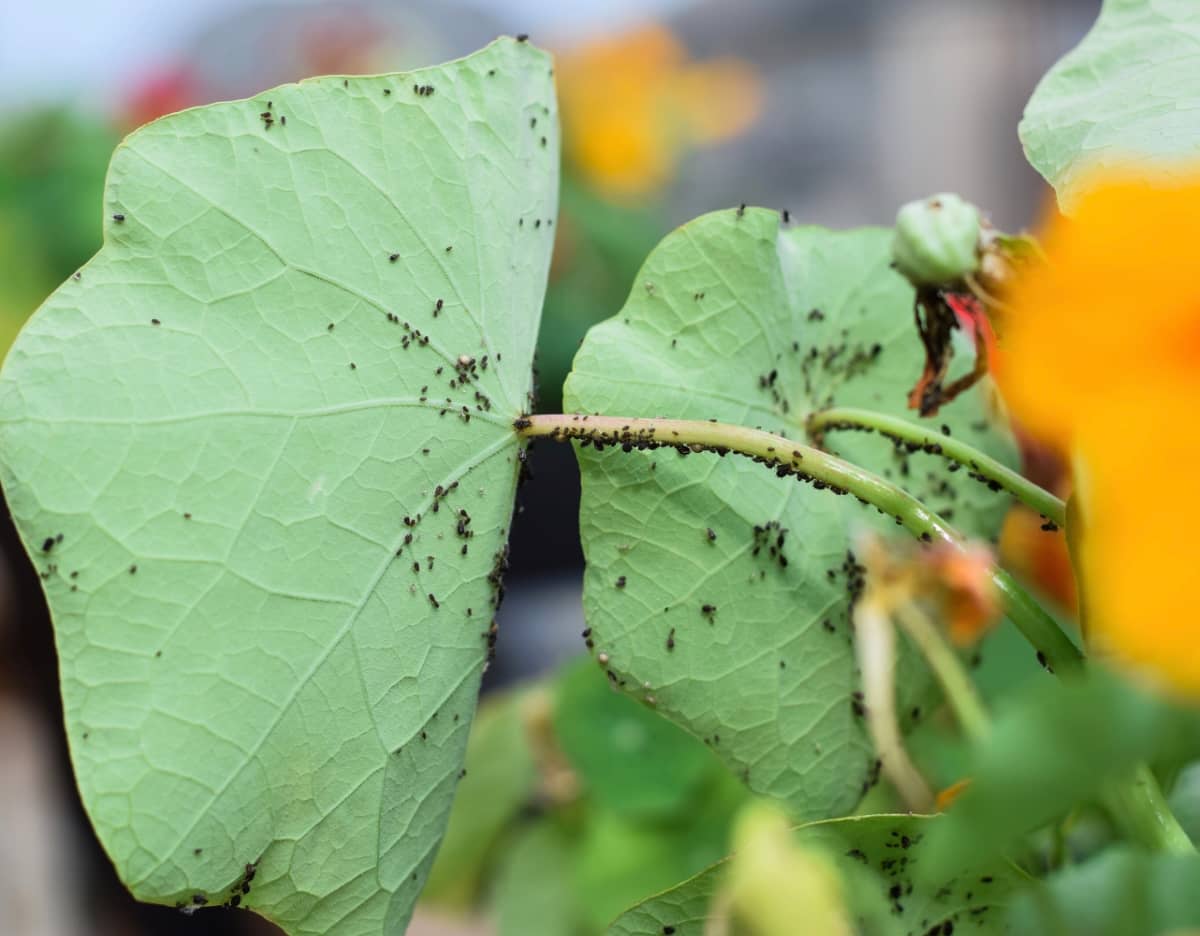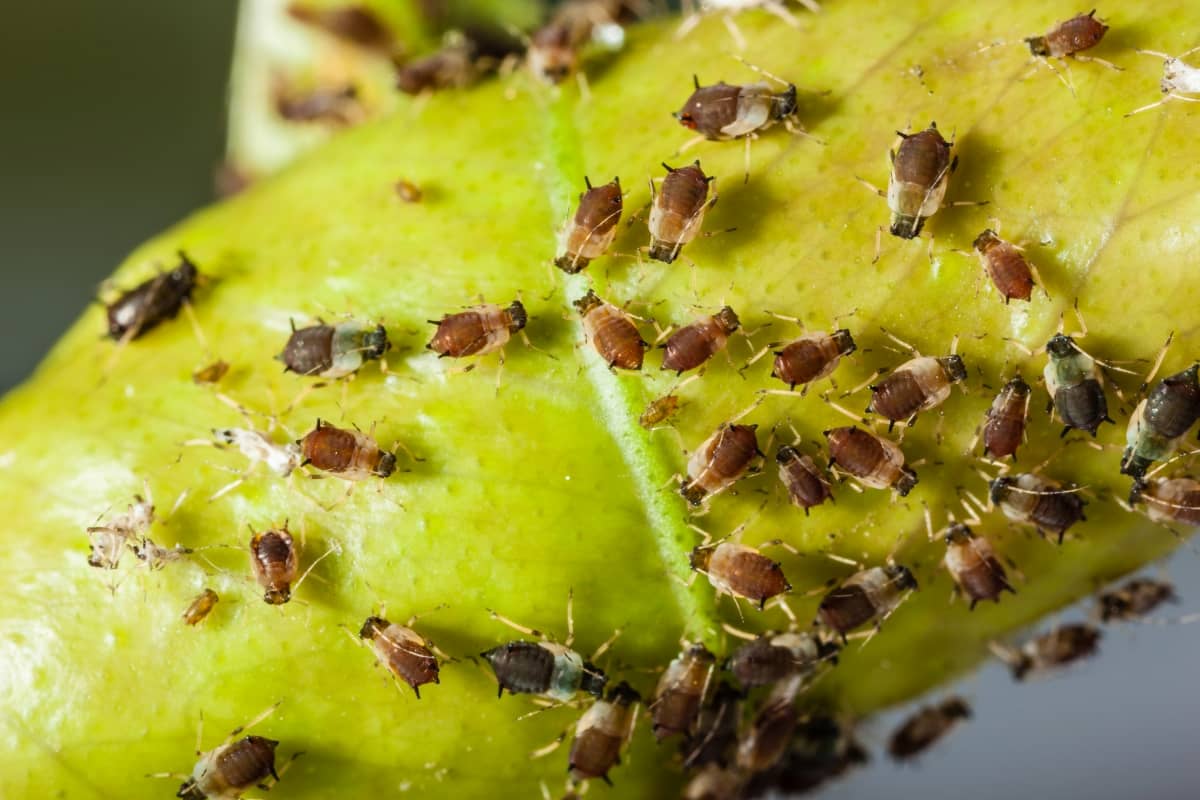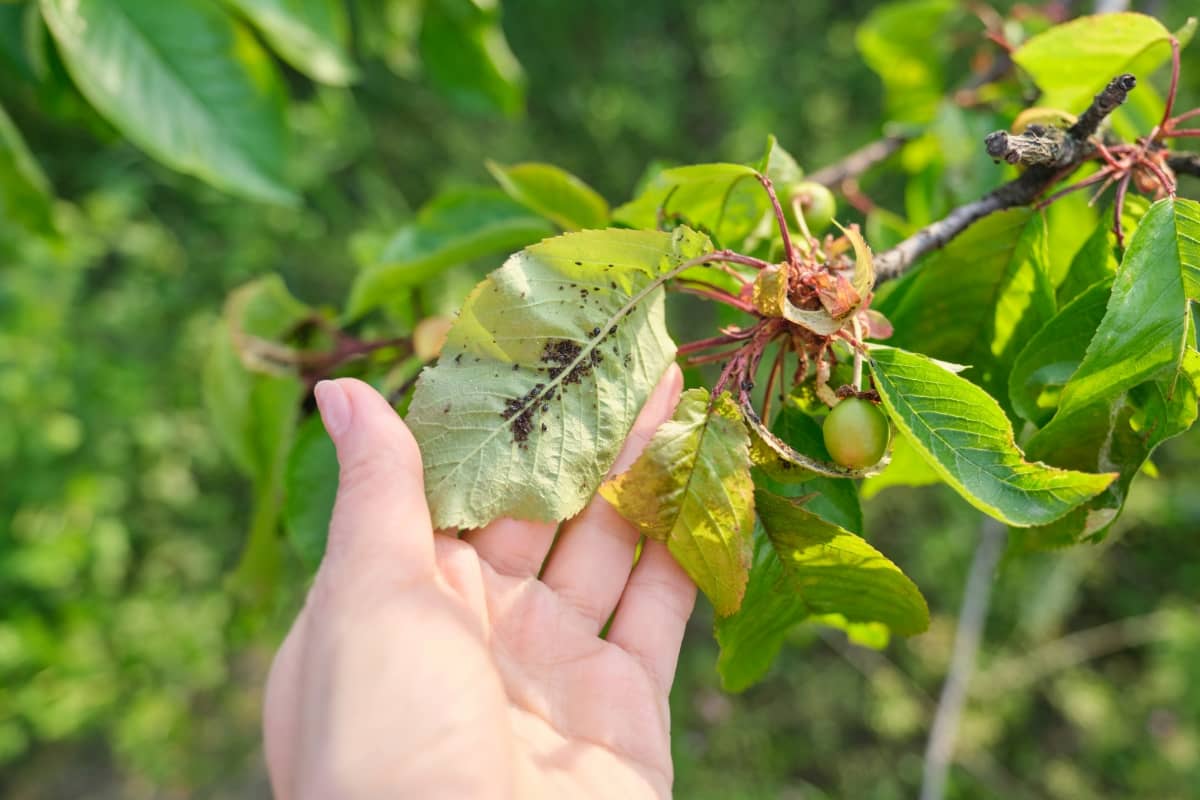Gardening is a delightful pursuit but comes with its fair share of challenges. Among these challenges are aphids, minuscule pests that can wreak havoc on your plants. In this guide, we’ll explore the diverse world of aphids, from the notorious Green Peach Aphid to the elusive Foxglove Aphid, and discuss effective strategies to keep your greenery thriving.

Different Types of Aphids
Green Peach Aphid (Myzus Persicae): A Common Agricultural Pest
Myzus persicae, the technical name for the green peach aphid, is a dangerous pest for gardeners and farmers. These tiny green insects attack fruit plants like tomatoes, peppers, and peaches. Beyond just physical harm, they are also known to spread plant diseases, which pose a major risk to agricultural yields.
Regularly inspect your plants and take quick action at the first indication of an infestation to combat the Green Peach Aphid. Introduce lacewings and ladybugs, two naturally occurring predators to control their population. Consider applying neem oil or insecticidal soaps for a more focused strategy.
Woolly Apple Aphid (Eriosoma lanigerum): Impact on Fruit Trees
The Woolly Apple Aphid, or Eriosoma lanigerum, poses a specific threat to fruit trees, especially apple and pear varieties. These aphids, distinguishable by their woolly, wax-coated bodies, gather on the tree’s branches and trunk to extract sap and cause serious harm. The honeydew they secrete also attracts mold, compromising the tree’s health. To combat Woolly Apple Aphids, prune affected branches and apply horticultural oil during the dormant season. Encourage natural predators like parasitic wasps, which can help keep their population in check.
Rose Aphid (Macrosiphum rosae): A Threat to Ornamental Plants
The Rose Aphid or Macrosiphum rosae, named in science, can harm gorgeous roses. These microscopic, pliable insects congregate on rosebuds and newly emerging shoots, extracting sap and resulting in defects in the blossoms. A Rose Aphid infestation, if left unchecked, will restrict the growth and reduce the visual attractiveness of your precious roses.
In case you missed it: Natural Ways to Get Rid of Tiny Bugs on Tomato Plants: Aphids on Tomatoes, Control with Home Remedies

Use a powerful stream of water to spray your rose plants regularly to knock down rose aphids. Introduce lacewings and ladybugs, two naturally occurring predators to control their population. An environmentally friendly and focused alternative is to use insecticidal soap.
Cabbage Aphid (Brevicoryne brassicae): Infesting Cruciferous Vegetables
Broccoli and other cruciferous vegetables are often the target of the Cabbage Aphid (Brevicoryne brassicae). Sucking sap from the undersides of leaves, these tiny, pear-shaped bugs cause the leaves to twist and distort. In addition to being unsightly, the damage may affect the plant’s general well-being and output.
Encourage natural biological predators in your garden, such as parasitic wasps and ladybugs, to fend off cabbage aphids. Use companion planting techniques, such as interplanting aromatic herbs like mint or basil, to keep aphids away. Use neem oil or insecticidal soap as a targeted therapy for severe infestation.
Black Bean Aphid (Aphis fabae): Impact on Legume Crops
Legume crops, including beans and peas, are at risk from Aphis fabae, also called the Black Bean Aphid. These tiny black insects cause yellowing and distortion to leaves by gathering on the undersides of the leaves. If black bean aphids are not controlled right away, they have the potential to multiply quickly and cause a rapid and extensive infestation.
Examine your legume crops frequently for indications of infestation to help fend off Black Bean Aphids. To control their number, introduce natural predators like parasitic wasps or ladybugs. Use neem oil or insecticidal soap to target these pests in cases of severe infestation successfully.
Potato Aphid (Macrosiphum euphorbiae): Threat to Solanaceous Plants
The Potato Aphid (Macrosiphum euphorbiae) is a disease affecting solanaceous plants, such as potatoes and tomatoes. These aphids cause stunted growth and deformed leaves because they feed on the plant’s sap. They also can spread infections, making them a double threat to the well-being of your solanaceous crops.
Crop rotation can help protect your potatoes and tomatoes by upsetting the aphid’s life cycle. Promote the presence of lacewings, parasitic wasps, and ladybugs as natural predators. If required, attack Potato Aphids with insecticidal soap or neem oil so as not to harm beneficial insects.
Melon Aphid (Aphis gossypii): Affecting Cucurbit Crops
Cucurbit crops are prone to attack by the Melon Aphid (Aphis gossypii), which can affect cucumbers, melons, and squash. The undersides of leaves become yellowed and distorted due to the clustering of these tiny green insects. Their secreted honeydew may attract mold, endangering the health of your plants even more.
In case you missed it: How to Control and Eradicate Aphids: Home Remedies, Treatment, and Management

Examine your cucurbit crops frequently for indications of infection to help fend against Melon Aphids. Introduce lacewings and ladybugs, two naturally occurring predators to control their population. To maintain the well-being and efficiency of your cucurbit plants, think about applying neem oil or insecticidal soap for focused management.
Foxglove Aphid (Aulacorthum solani): Feeding on Various Host Plants
Aulacorthum solani, the scientific name for the Foxglove Aphid, is a multipurpose pest that feeds on various host plants. Vegetables, decorative flowers, and other garden plants are host to these aphids. They feed on plants by extracting sap, which causes leaves to twist and deform. Their pale yellow appearance distinguishes them.
Eliminate weeds and debris from your yard to maintain proper garden cleanliness and ward off Foxglove Aphid infestations. To keep an ecosystem balanced, introduce natural predators like ladybugs or lacewings. Use neem oil or insecticidal soap to tackle these pests without injuring beneficial insects if required.
Pea Aphid (Acyrthosiphon pisum): Impact on Pea and Bean Crops
The scientific name for the pea aphid, Acyrthosiphon pisum, is widely used to attack crops of beans and peas. These tiny green insects gather on the undersides and stems of leaves, where they draw sap and cause the leaves to curl. The damage may negatively impact both general plant health and output.
Check for symptoms of infestation in your pea and bean crops regularly to combat pea aphids. Introduce lacewings and ladybugs, two naturally occurring predators to control their population. As a targeted therapy, think about applying neem oil or insecticidal soap to maintain the health and yield of your bean plants.
Corn Leaf Aphid (Rhopalosiphum maidis): Infesting Corn and Sorghum
Rhopalosiphum maidis, often known as the Corn Leaf Aphid, poses a hazard to sorghum and corn crops. Aphids are tiny, pale yellow insects that gather on the lower side of leaves, sucking sap and making the leaves curl. Severe infestations may cause plants to become less healthy and produce less.
Monitor your sorghum and corn crops regularly to prevent Corn Leaf Aphids. Introduce lacewings and ladybugs, two naturally occurring predators to control their population. To ensure the health and productivity of your cereal crops, think about applying neem oil or insecticidal soap for targeted management.
Frequently Asked Questions (FAQ) on Aphids
Do Aphids Only Affect Outdoor Plants, or Can They Infest Indoor Plants, Too?
Aphids can affect both outdoor and indoor plants. They are more common in outdoor gardens but can also infest houseplants.
How Fast Do Aphids Reproduce?
Aphids are known for their rapid reproduction. They can reproduce asexually, and a single aphid can give birth to live offspring, leading to large populations in a short time.
In case you missed it: How to Protect Cucumbers from Aphids, Mites, and Beetles: Naturally and Organically

Conclusion
Understanding the different types of aphids and implementing proactive measures is crucial for maintaining a healthy garden. By identifying these tiny pests and employing effective strategies, you can protect your plants from the detrimental effects of aphid infestations. Stay vigilant, cultivate a balanced ecosystem, and let your garden thrive.
- Feed Your Flock for Less: Top 10 Tips to Save on Chicken Feed
- Ultimate Guide to Ossabaw Island Hog: Breeding, Raising, Diet, and Care
- Hatching Answers: The Top 10 Reasons Your Chickens Aren’t Laying Eggs
- Eggs and Economics: Breaking Down the Cost of Raising Backyard Chickens
- Defend Your Greens: Proven Methods to Keep Iguanas Out of Your Garden
- Ultimate Guide to Cinnamon Queen Chicken: A Comprehensive Guide for Beginners
- Ultimate Guide to California Tan Chicken: Breeding, Raising, Diet, Egg-Production and Care
- Ultimate Guide to Marsh Daisy Chicken: Breeding, Raising, Diet, and Care
- 10 Types of Chicken Farming Businesses You Can Start for Profits